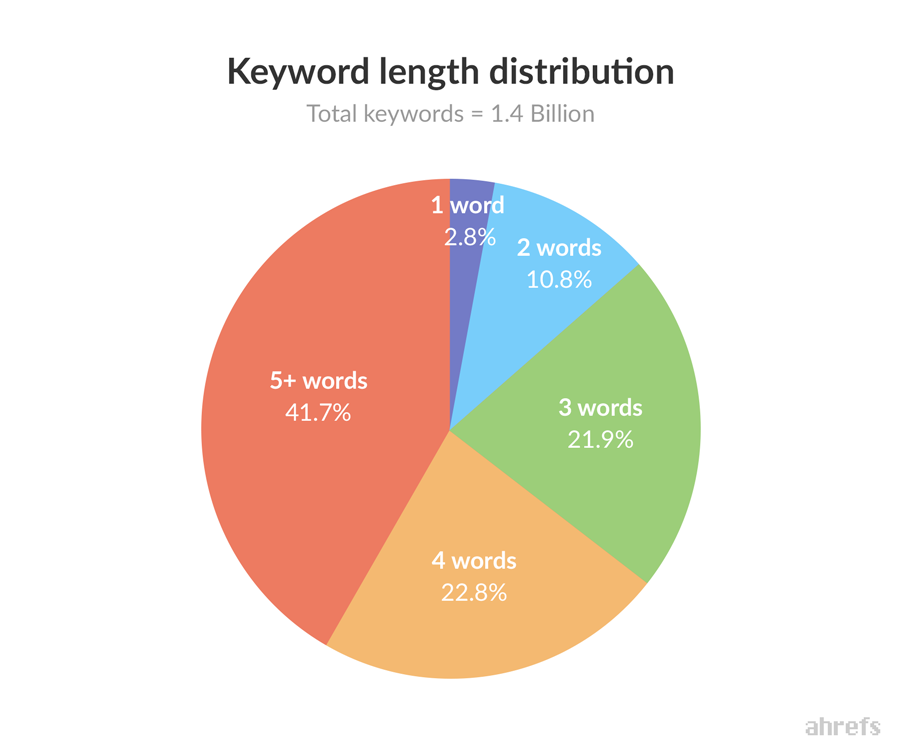Search Has Changed. This Is How Your SEO Content Needs to Evolve

We all know that the Google algorithm changes quite frequently. Major updates are rolled out several times per year.
None of these major changes, however, make for the need of a major shift in SEO content strategy. Not on their own, at least.
I’ve written tons of articles and blog posts saying in which I emphasized that, if you respect your readers, search engines will respect you in turn.
That stands true.
Irrespective of how much SEO and content experts like to speak about the changes brought about by each algorithm change, the truth is that you don’t need to update or change all your content after every search engine update.
Still, it’s also undeniable that change has evolved a lot the past decade. So much, in fact, that we can’t speak about SEO content in the same terms.
I look at pre-2006 articles on SEO topics and realize it was a completely different world back then.
Even if this major shift in search and SEO content wasn’t brought to you by a single update or algorithm change, we have to recognize its impact.
Let’s take a look at the biggest search changes and find out how your SEO content needs to evolve to keep up with them.
Search Changes and the Evolution of Your SEO Content
There are almost 4 billion searches on Google alone every day. Sure, there’s also social media and live streaming, video content and messaging apps.
But can you really afford to ignore those 4 billion searches every day?
Of course not!
This is why we keep up and make sure that our SEO content is on-point.
At Idunn, for instance, we do more than check the most recent algorithm changes. We read forecasts and reports to make sure that the SEO content we create for our clients will serve them for years to come.
By the way, if you need help with content that both Google and your human readers love, hit us up! We’d love to help you with all your content and copywriting needs!
Let’s take a look at the most significant ways in which search has changed and how your content can keep up with it.
Search Is More Specific
Up until a few years ago, it wasn’t uncommon to search for “restaurants Torrance” or “café Stockholm”. Once the results popped up, you would have to sift through them to find those that are relevant for you.
You may be hungry or in need of a good coffee, but this doesn’t mean you’re willing to drive or Uber to the other side of the town, right?
When Google bots got smarter, our search habits became more conversational.
For instance, if you’re planning a trip to Stockholm, you may still search for “café Stockholm”. But if you live there, you’ll be searching for “café Stockholm near me” or even “fair trade coffee shop Stockholm city center.”
A 2017 study by Ahrefs showed that most of our search queries now have more than five words.
 Image via Ahrefs
Image via Ahrefs
Why is this happening, you ask? Are people really willing to spend extra time typing so much, especially on small, mobile screens?
Well, yes and no.
First off, we have begun to understand how search works almost intuitively. So we know that if we want specific results, we’ll have to get specific in our queries.
But this doesn’t mean that we need to put in extra effort.
In 2016, Google CEO Sundar Pichai announced that 20% of queries on mobile are voice searches. Add that to the rise of voice assistants like Alexa and you’ll understand that getting specific results for specific queries got much easier. And more conversational.
Why Is Google Doing this to Us?
Melodrama aside, Google is doing nothing to us, SEO experts or website owners. They’re actually doing something for us, for their users and for our readers.
When search uses long-tail keywords, your SEO content can no longer focus on keyword stuffing. You need authority content that explores every facet of a topic and that uses LSI keywords, as well as long-tail ones.
Here’s an example of how it can help you. Let’s say you have a bakery. And you want to optimize your website for “chocolate cake”. Now if your SEO copywriters are doing their job poorly, they’ll optimize for that keyword. And you will get some traffic from it.
But it won’t be from people looking to buy your awesome cakes. It will be from those who are looking for a recipe, a cheap supermarket cake or inspiration to decorate their own.
On the other hand, if you optimize for “artisanal chocolate cake in Tampa Bay”, then you’ll reach the right audience. Better yet, it’s easier to rank for longer, local keywords.
While search has changed, much of the SEO content has been stuck in the 2000s. We still get requests for articles that have a 5% keyword density. We politely turn them down and explain why they’re not only pointless, but also harmful.
However, we rarely get an answer back. When we do, it’s just to say that they found someone who’ll take on the project for a few bucks.
And this tells us that the content world is still having trouble keeping up with on-page SEO trends.
How Your SEO Content Needs to Evolve
In a nutshell: get specific and conversational.
You wouldn’t tell a friend “let’s go café Stockholm”, would you?
Then don’t optimize for such keywords.
Focus on “fair trade café downtown Stockholm”, “vegan restaurant Tampa Bay city center”. People aren’t doing generic queries anymore, so you shouldn’t be writing generic content either.
When you tackle a topic on your blog post, only go generic if your domain authority permits it.
For example, if you’re not Moz or Search Engine Land, you stand very little chance of ranking for “SEO”. Queries like “how to do SEO in 2018”, “tips for SEO on a budget” are a different story, though.
Getting specific with your SEO content has an additional benefit: when you deliver exactly what your readers what to learn, your bounce rate decreases. A low bounce rate is one of the top signs of a quality website for search engine bots.
Searchers Are Conversational and They Have Shorter Attention Spans
We covered the conversational bit above. Searchers have gotten chattier mostly thanks to voice search.
But what about the shorter attention span?
Here’s one factor that influenced it: the Google featured snippets. They serve as an instant, easily digestible answer to one’s question.
It’s typically a list or a short definition of a concept. And no, it’s not just Wikipedia that gets featured snippets.
But these pesky snippets are only a small part of the problem. In fact, one may argue that they are a response to a problem that existed long before they did.
It looks like 55% of page views are shorter than 15 seconds. To make matters worse, no more than 20% of your readers will get to the second half of your content. Lastly, 75% of readers skip over words made of two or three letters.
The conclusion is simple: we are skimmers.
We skip over short words because our brains can easily fill in the blanks. And it’s faster this way.
Speed is also what makes searches love the featured snippets. They offer a quick answer to their question. And if they need to read more, they can simply click on the link and get to the whole article.
What does this mean for your SEO content?
Let’s see.
What to Do
In the best possible world, we’d get every piece of our SEO content featured as a snippet on Google. But this is not the best possible world and, let’s face it, our content isn’t always the best possible one on a given topic.
Of course, this doesn’t mean we should stop chasing the coveted snippets. The best part about this chase is that it comes with added benefits. The pieces of content that get to be featured snippets are also very readable, focused and highly conversational.
How can you get featured in snippets and write readable content at the same time?
- Use bulleted or numbered lists (see what I did here?)
- Add photos and videos to break down the text
- Use subtitles so people can easily skip to the section they need to read
- Use bold or Italic fonts to emphasize important words or ideas – it also helps people skim faster
- Place your CTAs and important information in the left side of the page where most people focus their attention.
- Use infographics for bit-sized, easily digestible information
- Get to the point quickly – make your point in the first part of the page to make sure everyone gets to read it
No one can guarantee that one of your pieces of content will ever become a featured snippet. But improving your SEO content constantly comes with more benefits.
Conclusion
As marketers, we sometimes tend to focus on research reports and forecasts by industry leaders to tell us how to create amazing campaigns and improve our SEO content. There’s nothing wrong with that, of course.
But we also tend to ignore the easiest way to get insights. We, too, are human. And we use Google searches quite frequently. We also read a lot of content.
Where am I going with this?
Before crafting your next piece of content, ask yourself what you like to read. What type of page structure do you enjoy? Do you like photos in-between paragraphs?
Of course you do!
Next, remember that your SEO content should be written for humans like yourself, not for search engines. Make it readable, conversational and user-friendly. Half the battle will be won this way.
At Idunn, the SEO content we write isn’t created by writers alone. Marketers, content writers and editors work together to ensure that every piece of content we send our clients is designed for human readers and has the potential to rank high in SERPs.
Need a boost for your SEO content? Why not let our skilled team handle it? Tell us a bit about what your goals are and we’ll take it from there:


7 Comentarii la “Search Has Changed. This Is How Your SEO Content Needs to Evolve”
[…] can you possibly make sure that your SEO content is loved by both search engines and human […]
[…] will you presumably ensure that your SEO content is cherished by each serps and human […]
[…] can you possibly make sure that your SEO content is loved by both search engines and human […]
[…] Search has changed dramatically in the past few years. We now have: […]
[…] Search has changed dramatically in the past few years. We now have: […]
[…] Search has changed dramatically up to now few years. We now have: […]
[…] Search has changed dramatically in the past few years. We now have: […]